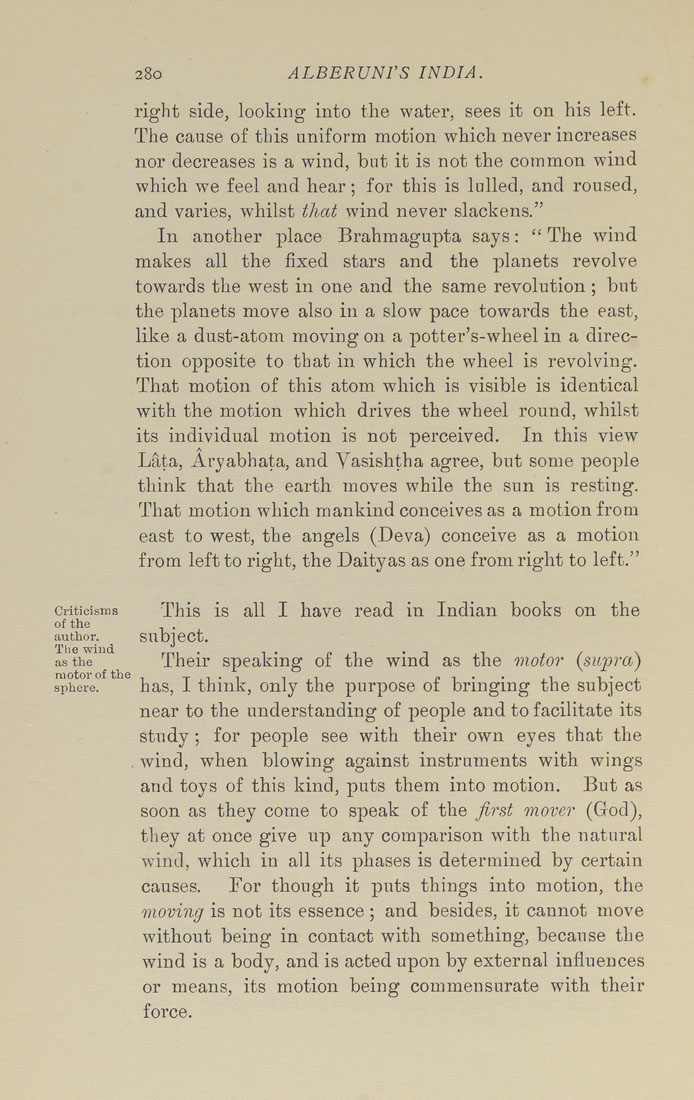Bīrūnī, Muḥammad ibn Aḥmad, Alberuni's India (v. 1)
(London : Kegan Paul, Trench, Trübner & Co., 1910.)
|
||
|
|
|
|
| Page 280 |

28o ALBERUNPS INDIA. right side, looking into the water, sees it on his left. The cause of this uniform motion which never increases nor decreases is a wind, but it is not the common wind which we feel and hear; for this is lulled, and roused, and varies, whilst that wind never slackens." In another place Brahmagupta says: " The wind makes all the fixed stars and the planets revolve towards the west in one and the same revolution ; but the planets move also in a slow pace towards the east, like a dust-atom moving on a potter's-wheel in a direc¬ tion opposite to that in which the wheel is revolving. That motion of this atom which is visible is identical with the motion which drives the wheel round, whilst its individual motion is not perceived. In this view Lata, Aryabhata, and Vasishtha agree, but some people think that the earth moves while the sun is resting. That motion which mankind conceives as a motion from east to west, the angels (Deva) conceive as a motion from left to right, the Daityas as one from right to left," Criticisms of the author. Tlie wind as the motor of the sphere. This is all I have read in Indian books on the subject. Their speaking of the wind as the motor (supti^a) has, I think, only the purpose of bringing the subject near to the understanding of people and to facilitate its study ; for people see with their own eyes that the wind, when blowing against instruments with wings and toys of this kind, puts them into motion. But as soon as they come to speak of the first mover (God), they at once give up any comparison with the natural vfind, which in all its phases is determined by certain causes. For though it puts things into motion, the moving is not its essence; and besides, it cannot move without being in contact with something, because the wind is a body, and is acted upon by external influences or means, its motion being commensurate with their force. |
| Page 280 |







